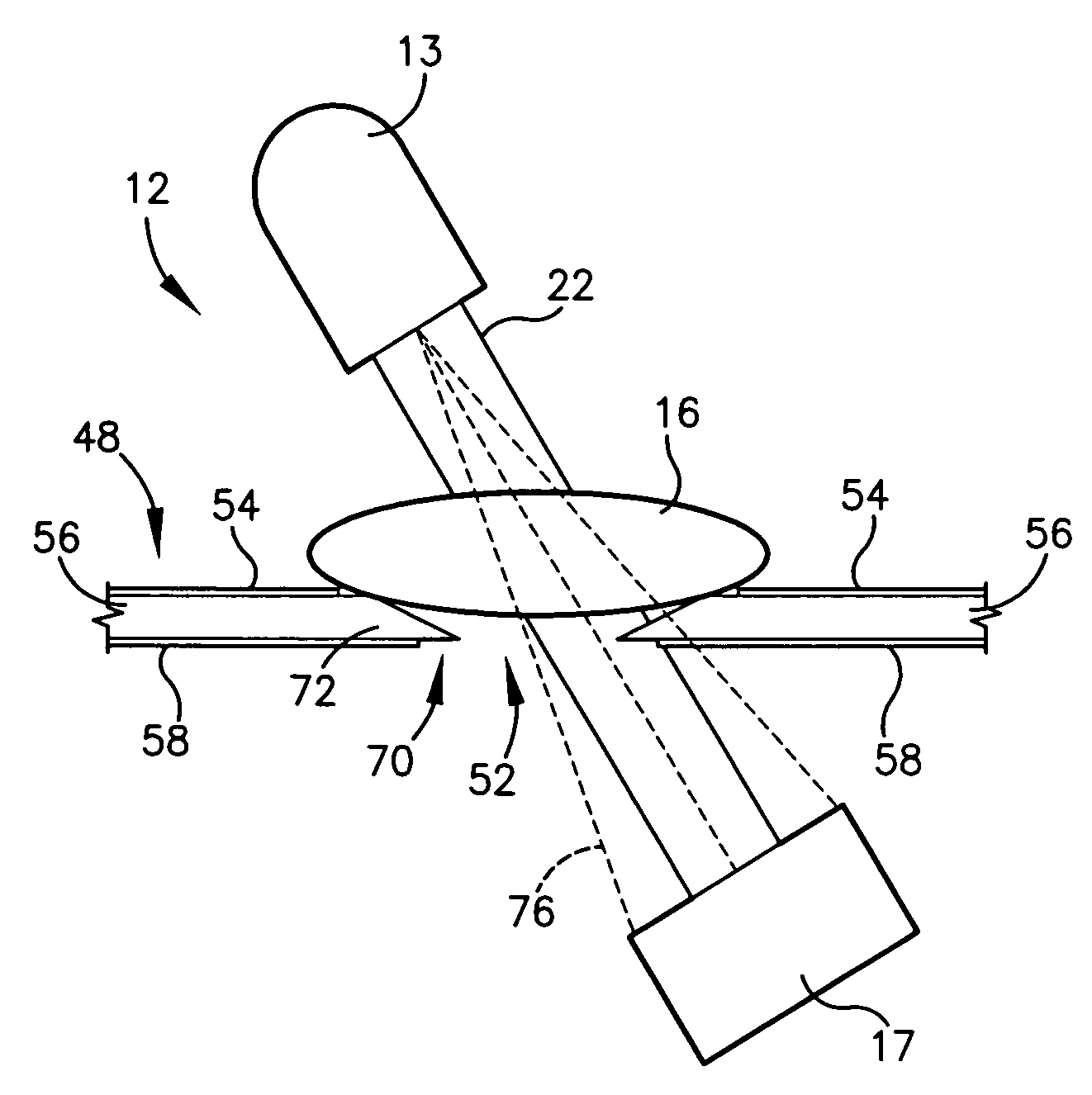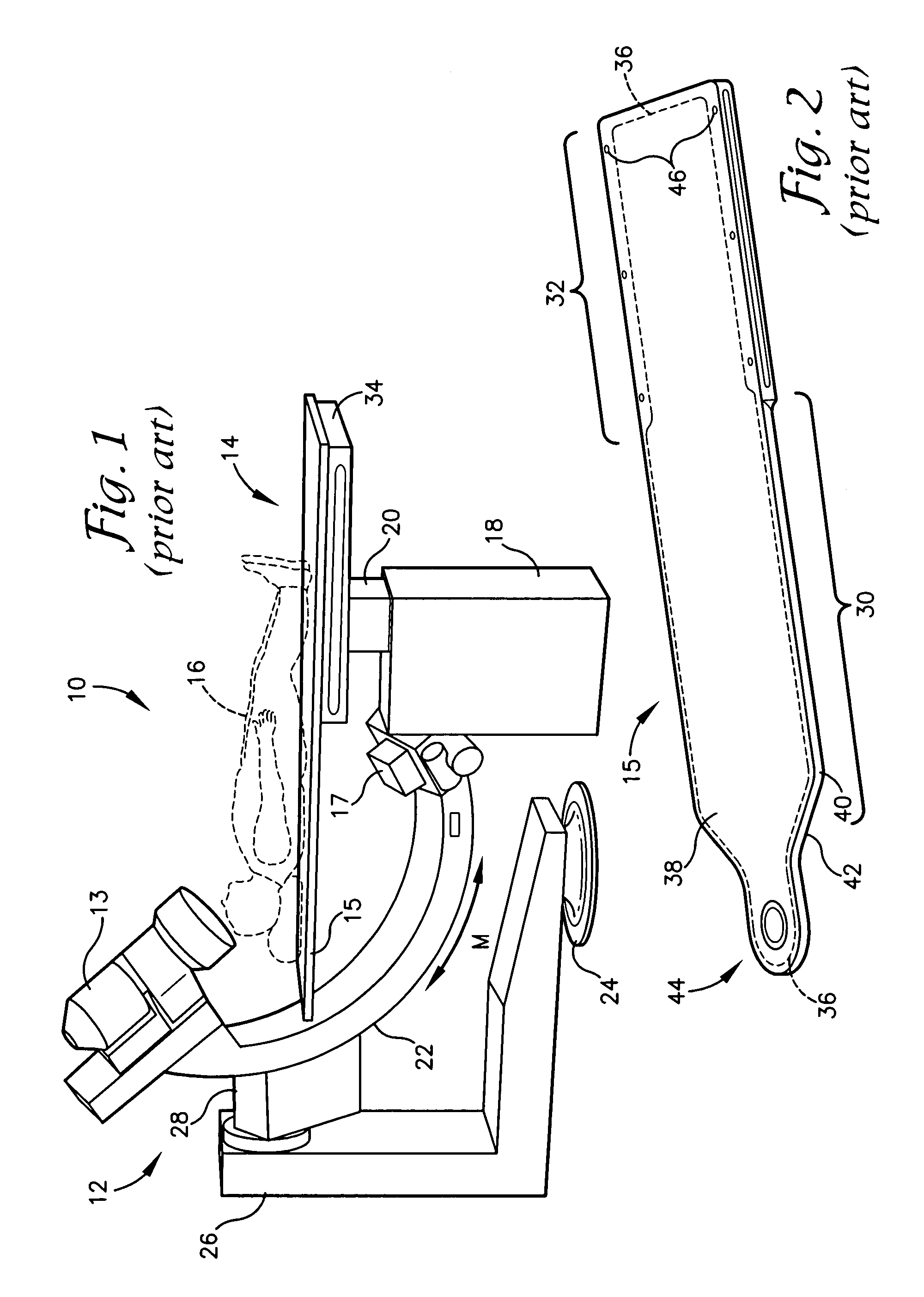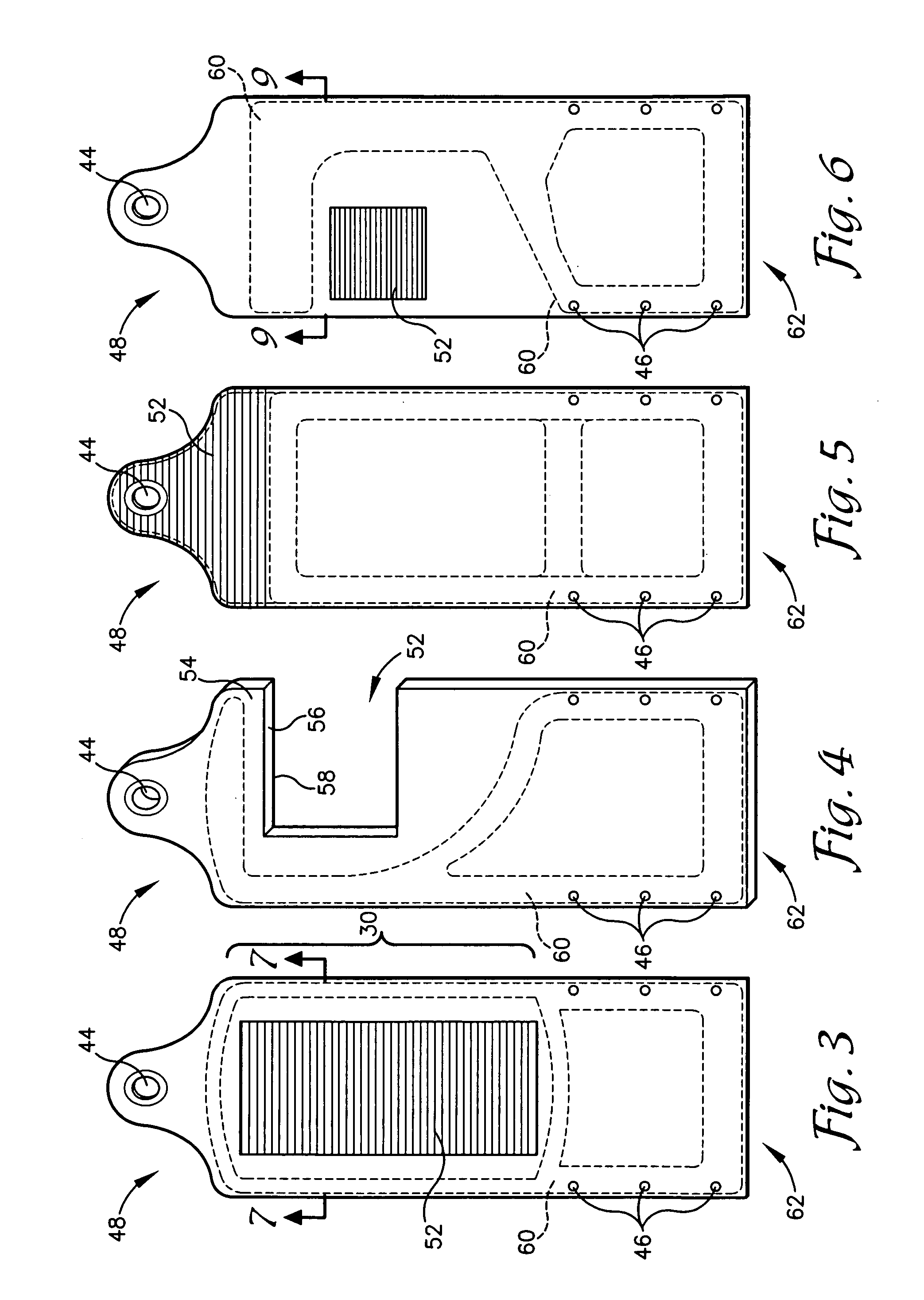Apparatus having areas of reduced attenuation for imaging support
a technology of attenuation and imaging support, applied in electrical apparatus, medical science, diagnostics, etc., can solve the problems of presenting certain potential harm and injury to both medical personnel and patients, skin burns, hair loss and sterility loss, etc., to reduce the amount of imaging energy needed, reduce the attenuation or loss of imaging signal, and improve procedures
- Summary
- Abstract
- Description
- Claims
- Application Information
AI Technical Summary
Benefits of technology
Problems solved by technology
Method used
Image
Examples
Embodiment Construction
[0039]As required, detailed embodiments are disclosed herein; however, it is to be understood that the disclosed embodiments are merely exemplary of the invention, which may be embodied in various forms. Therefore, specific structural and functional details disclosed herein are not to be interpreted as limiting, but merely as a basis for the claims and as a representative basis for teaching one skilled in the art to variously employ the teachings in virtually any appropriately detailed structure.
[0040]Referring now to FIG. 1, a typical medical imaging apparatus and patient support table combination 10 are shown. The combination of FIG. 1 is comprised of imaging device 12 and imaging patient support surface or imaging table 14. In general, these two devices are used together to provide a continuous or intermittent image of the positioning of surgical devices within a patient 16 during the course of an image guided diagnostic medical or surgical procedure. More particularly, a patient...
PUM
 Login to View More
Login to View More Abstract
Description
Claims
Application Information
 Login to View More
Login to View More - R&D
- Intellectual Property
- Life Sciences
- Materials
- Tech Scout
- Unparalleled Data Quality
- Higher Quality Content
- 60% Fewer Hallucinations
Browse by: Latest US Patents, China's latest patents, Technical Efficacy Thesaurus, Application Domain, Technology Topic, Popular Technical Reports.
© 2025 PatSnap. All rights reserved.Legal|Privacy policy|Modern Slavery Act Transparency Statement|Sitemap|About US| Contact US: help@patsnap.com



